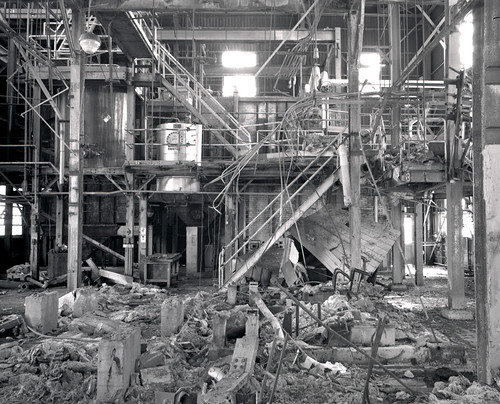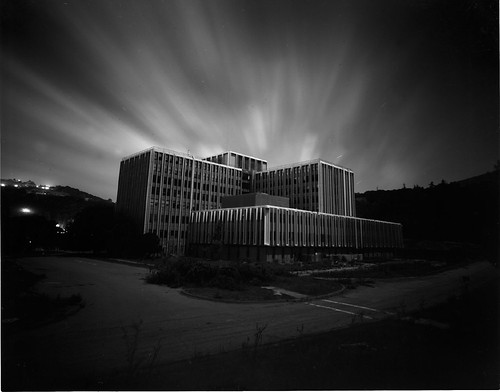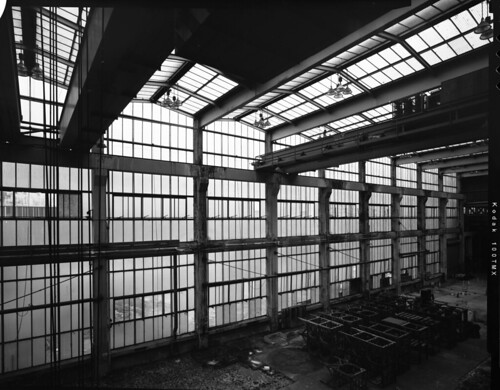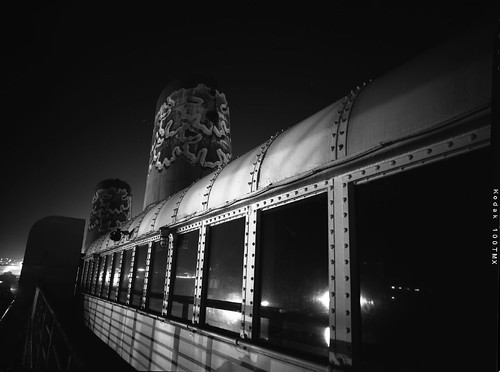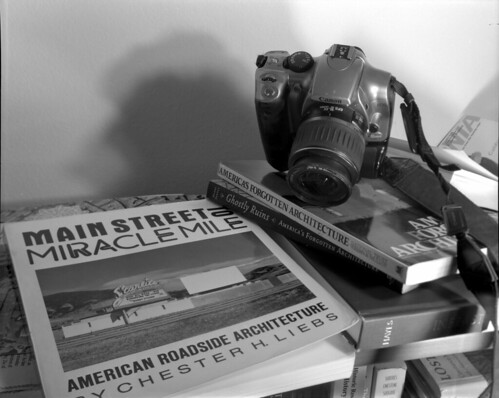Stephen’s Meat – History into a Parking Lot
 Show on map January 19th, 2008
Show on map January 19th, 2008
By Jonathan H
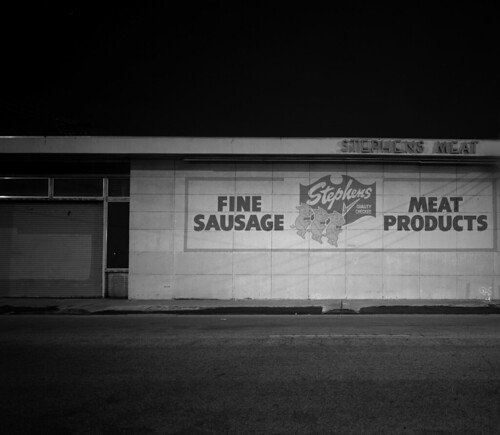
The front wall of Stephens Meat Products in San Jose, California. This building no longer exists.
There was a time in our history in which a cut of meat, or links of sausage didn’t come from a chain supermarket. Meat wasn’t transported pre-cut, across the country, via refrigerated trains. There was a local butcher. He knew you personally, and likely had an order made especially for you, every week.

Stephens Meat Products is now a parking lot next to San Jose’s central train station. Those who happened to pass by when the building existed, and who were not regular customers of Stephens, would immediately be struck by the neon sign above the parapet and a 1950s-era sign depicting an illuminated pig (one which was animated, mind you).
The building was constructed in 1948, but the business itself dates as far back as the Depression Era. During World War II, meat was hard to come by, but Stephen Pizzo was able to find an uncle with a beef ranch in the hills. When times began to change, and the packaged meat industry was dawning, Pizzo was visionary enough to purchase the first vacuum-pack lunch meat wrapper West of the Missouri. “They said he was crazy,” said Bob Morrison, Pizzo’s son-in-law.
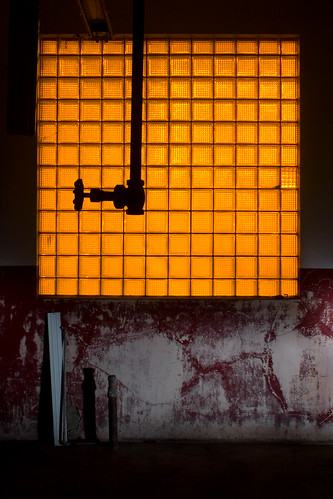

Eventually, Pizzo’s meat products company was fighting an uphill battle. The big guys were controlling every aspect of the meat processing industry — vertical integration is what it’s generally referred as — and Stephen’s couldn’t compete with rancher cooperatives out East, who were controlling every stage of the production. These companies became the Oscar Mayers, Armour, and Swifts of today.
Morrison, who took over the business from his father-in-law, focused on quality to keep afloat — and it worked for years. He scoffs at the sausage made by the “big guys.”
“Beef Broth,” he said in a disgusted manner, “That’s what plumps ’em. I shudder to think where that broth comes from. We don’t need that. And our franks out-plump ’em all,” pausing for a moment. Then he picked up a package of chorizo sausage from his ‘corporate’ competitor, “Go ahead. Read the ingredients,” pointing out the list, which included salivary glands, lymph nodes, and tongue trimmings. “It doesn’t excite me seeing that on a sausage label.”
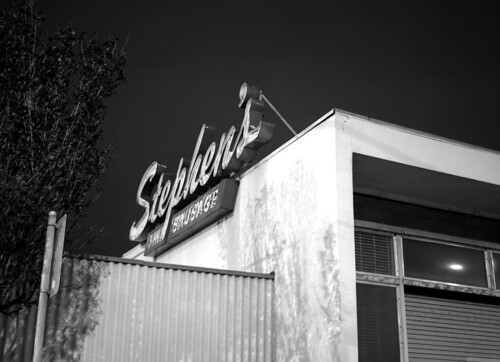

By the turn of the century, though, Stephen’s Meat Products was closing down. After 63 years of providing links and dogs to ballparks, cafeterias, and supermarkets the company just couldn’t compete. In its final years, it focused on its strong suit — something the conglomerates had difficulty matching in quality — sausage.
“In the meat business, sausage making is the top of the line,” Morrison explains. “Anybody can kill, but making sausage come out the same every time? It’s an art.”

